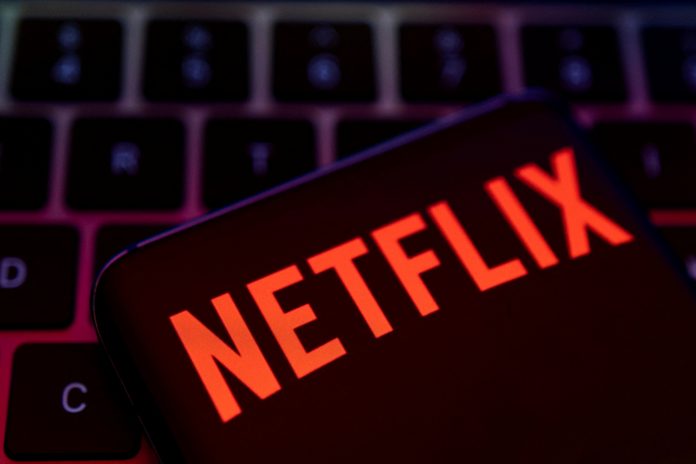A Netflix ad campaign is as inevitable as death and taxes. In a generation that is supposed to be allergic to advertising, who switched to streaming so they could control what they watched, Gen Z will now have to endure ads whether they like them or not. Just like that scene in A Clockwork Orange, Gen Z will face unstoppable, unskippable marketing no matter what.
Like Spotify, Netflix with ads will launch as a cheaper subscription tier in November. Even so, this is still a significant change for a streaming platform that builds a brand identity around being ad-free – ” Commercial-free television and movies” is one of their own advertisements.
CEO Reed Hastings expressed disinterest in advertising in 2020, stating, “(It) looks easy until you get into it… There’s much more growth in the consumer market than there is in advertising, which is pretty flat”. He clarified, however, that there was “definitely no rule” prohibiting ads on the platform, rather it was a “judgement call”.
Netflix made a judgement call this year after losing 200,000 subscribers and dropping 35% in the stock price in the first quarter. We are living in desperate times.
Gen Z: Cracking The Code

Consumers in Gen Z and millennials dislike ads and it’s unlikely any of them will be enthusiastic about seeing ads on the cheaper tier. This is more like pinching the nose before swallowing to cut down expenses for the upcoming recession. In fact, this represents an opportunity for marketers to get creative and adapt not only to a brand-new platform but also to a wider audience.
There is an entire attention economy on TikTok and YouTube dedicated to product recommendation, despite the general consensus that Gen Z does not like being sold to. Marketing must be authentic and honest to appeal to Generation Z, which is why influencers are preferred to brands when it comes to recommendations and discounts. An influencer’s recommendation is likely to influence the purchase decision of 79% of Gen Zs in the UK and Ireland according to Sprout Social.
Developing partnerships with this age group is essential. A strategic partnership with the streaming platform’s own content may prove to be the most effective way for marketers to deal with the streaming behemoth.
Brand Partnerships in the Rick and Morty Multiverse

Millennials’ favorite TV show, Rick and Morty, has seen multiple successful brand partnerships over the years, the most popular TV show like Old Spice, Pringles, PlayStation 5, and Instagram. The most recent ads serve as a promotion for the new series and Wendy’s. This marks the third year of the show’s partnership with Wendy’s. The ads from Rick and Morty are not only funny and authentic, but they also resonate with viewers well.
There are 1.1 million views on a YouTube video that combines many of the ads. The top comments included: “I like the way Rick counts his money at the end as if he were an advertisement”; “Rick and Morty make people look for ads because they’re just actual scenes made to look like ads.” Ads work not because they generate sales but because they increase brand value.” Another user praised the ad for still feeling “true to the show’s energy”.
Wendy’s ad video on YouTube, which has received an astonishing 11 million views, also expresses similar sentiments: “Now this is the type of ad that actually makes me want to buy what they’re selling”; “If every ad was like this, I’d say rates would go up by 70%.”
A Rick and Morty partnership works because they are unabashed and authentic to the show. Rather than trying to hide their commercialisation, the Rick and Morty ads acknowledge it openly. As well as creating genuinely ‘canon’ content for fans, they make a humorous point about this. Audiences trust these characters, and they can tell when they are acting authentically just as they do with influencers.
Possibilities are endless
A partnership model similar to Rick and Morty could be useful to marketers paying for Netflix premium ad slots. Gen Z’s favourite TV shows are Netflix’s original series. Including Netflix’s own content in ads would enhance the platform’s marketing experience, similar to how podcast hosts advertise sponsor brands to their audience. The platform offers an opportunity to get creative and create more content.
Another example – Jane the Virgin, a meta-soap opera popular with Gen Z, which could easily advertise like Rick and Morty with its self-awareness.
You could even be integrated into a dating app ad like Hinge – another zoomer favourite. The advertisement could portray Joe Goldberg on a painfully uncomfortable date with a new love interest. The two met in a bookstore, complete with his extensive and neurotic monologue. There is a visible unease between the love interest and the audience, as we know that this character is a psychopath, whereas she does not. In a brighter scene, the love interest now has the Hinge app and is looking for a better date. With Hinge, you can learn a bit about each other before your date.
As a result, marketers should take Netflix’s ads as an opportunity to partner with the platform itself, to integrate their brand into its own content, and its own vernacular, so that they can better engage with their audience and gain more clicks.
As time moves on, we’ll have to wait and see how Netflix’s ads turn out. Other streaming platforms play ads between shows and films, with no apparent connection. With integrated partnerships, it is possible to connect with an audience and satisfy them; an opportunity to make advertising easier for a generation that is supposedly allergic to it.


















 Meet our te
Meet our te













